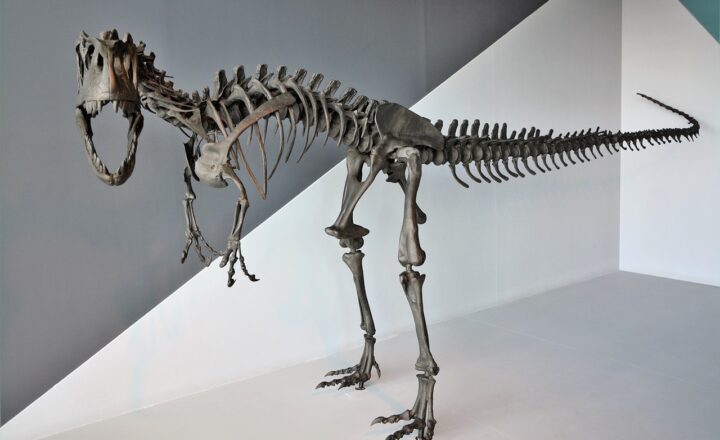How Scientists Use Clues from Teeth to Understand Early Human Diets
November 15, 2024

The study of early human diets has fascinated scientists for decades, providing critical insights into our ancestral behaviors, adaptations, and survival strategies. One of the most revealing sources of information about the diets of our early ancestors lies within their teeth. Recent advancements in dental research have allowed scientists to analyze these natural archives, unlocking information about what our forebears consumed and how their diets evolved over time.
In this article, we will explore the various techniques scientists use to analyze teeth, the types of information these methods reveal, and the implications of these findings for our understanding of human history.
1. The Importance of Teeth in Dietary Analysis
Teeth are among the most durable parts of the human body, often persisting long after soft tissues have decomposed. This durability makes them an invaluable resource for paleontologists and anthropologists studying ancient human populations.
Some key reasons teeth are crucial for dietary analysis include:
- Preservation of Substantial Evidence: Teeth can preserve microscopic structures and chemical signatures that provide a record of an individual’s diet over time.
- Different Teeth, Different Clues: Different types of teeth (molars, incisors, canines) reflect diverse dietary habits. For example, molars are well-suited for grinding fibrous plant material, while incisors are designed for biting into food.
- Longitudinal Data: Teeth can provide longitudinal data, allowing scientists to trace dietary changes throughout a person’s life, helping to understand significant shifts in subsistence strategies and food sources.
This foundational role of teeth has led researchers to develop innovative methods for analyzing dental remains.
2. Techniques Used to Study Teeth
Scientists employ several sophisticated techniques to explore the dietary clues left behind in teeth, each unlocking different aspects of past eating habits:
A. Isotope Analysis
Isotope analysis is a powerful tool that allows scientists to determine the types of food consumed by early humans. The variation in isotopes present in tooth enamel reflects the carbon and nitrogen from dietary sources. Here’s how it works:
– **Carbon Isotopes:** Different plants and animals incorporate carbon differently based on their photosynthesis methods, resulting in distinct carbon isotope ratios. For instance, C3 plants (like wheat and rice) and C4 plants (like maize) have different carbon signatures.
– **Nitrogen Isotopes:** Nitrogen isotope ratios can indicate dietary protein sources, helping differentiate between those who consumed more plant-based diets versus those who were higher up the food chain.
This analysis allows scientists to reconstruct a picture of the ecological niches occupied by early human populations and the types of food that were prevalent in different regions.
B. Dental Microwear Analysis
Dental microwear analysis involves examining the wear patterns on tooth surfaces at a microscopic level. Different diets leave distinctive wear patterns:
– **Abrasion from Hard Foods:** Evidence of wear patterns can indicate whether early humans consumed hard foods such as nuts or seeds.
– **Smooth Surfaces:** Teeth that show smoother surfaces may indicate a softer, more processed diet.
By using scanning electron microscopy, researchers can derive insights into the dietary habits and ecological adaptations of various hominid species, allowing for deeper understanding of their lifestyles and environments.
C. Enamel and Dentin Histology
Histological analysis of tooth enamel and dentin—the harder outer layer and the softer inner core—can reveal periods of physiological stress and nutritional deficiencies:
– **Growth Rings:** Just as trees have growth rings, teeth have growth lines that reflect periods of health and stress. A closer examination can indicate changes in diet due to environmental pressures or resource availability.
– **Microstructural Changes:** Changes in the structure can reflect transitions from one dietary habit to another, indicating shifts in nutritional availability.
These histological markers serve as vital indicators of how early humans navigated food scarcity and abundance across different environments.
3. Insights from Ancient Diets
The insights gained from studying ancient teeth are profound and far-reaching, informing our understanding of human behavior and evolutionary trends:
A. Diet and Migration Patterns
Analysis of teeth can reveal migration patterns by reflecting changes in diet based on geographical location. For example, a shift from a primarily plant-based diet to one with a greater reliance on hunting signifies not just dietary changes but also adaptive strategies to new environments.
B. Social and Economic Structures
Teeth can provide hints about social structures as well. The presence of specific wear patterns or isotopic signatures can indicate dietary specialization, reflecting social roles and hierarchies within early communities. It may reflect food sharing practices or divide between hunter-gatherers and agricultural societies.
C. Health and Nutrition
Understanding ancient diets also sheds light on health issues faced by early humans. High ratios of certain isotopes may signal nutritional deficiencies or lead to insights about how dietary changes affected health over generations. A primarily carbohydrate-based diet, for example, may lead to enamel wear linked to dental health issues.
These findings contribute greatly to the burgeoning intersection of health, nutrition, and socio-economic dynamics in the evolution of human societies.
4. Recent Discoveries and Implications
Recent studies utilizing these analytical techniques have significantly reshaped our understanding of early human diets:
One remarkable discovery involved the teeth of **Homo heidelbergensis**, an extinct species of archaic human. Isotope analysis revealed a diverse diet that included plant matter, meat, and potentially seafood, indicating a sophisticated understanding of their environment and available food sources.
In another study focusing on **Neanderthal** remains, scientists found evidence for a diet rich in marine resources, suggesting that these hominins were adaptable and opportunistic eaters capable of exploiting various ecological niches.
These findings remind us that early humans were not static in their way of life; rather, they were highly adaptive. The ability to change dietary habits in response to environmental shifts was likely crucial for survival and played a significant role in the evolutionary success of human beings.
Conclusion
The study of teeth as markers of early human diets offers an extraordinary glimpse into our past. Through innovative methods like isotope analysis, dental microwear analysis, and histology, scientists can reconstruct the dietary patterns and lifestyles of our ancestors.
The information gleaned from teeth is not merely academic; it informs on how we, as humans, have adapted to our environments, reshaped our diets, and interacted with our ecological systems throughout history. As we continue to explore these dental archives, we uncover not just the story of what our ancestors ate but also the intricate relationship between diet, health, and survival across millennia.
Understanding early human diets through dental analysis not only enhances our knowledge of human evolution but also sheds light on contemporary nutritional challenges, reinforcing the importance of dietary adaptations in ensuring our survival.








